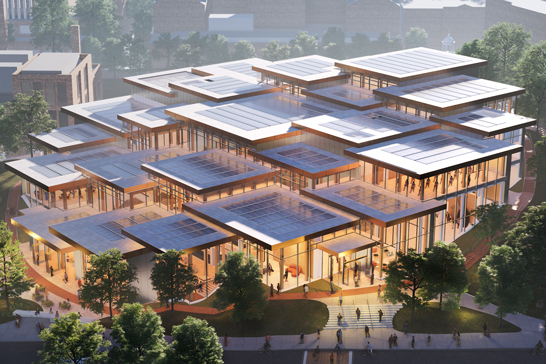
Committed to Sustainability
Advancing a culture of sustainability through learning, research, engagement, and institutional commitments.
Sustainability Features
Currently targeting a LEED Platinum certification, the sustainability charter for the Bloomberg Student Center outlines three key goals: student health and well-being, stewardship of the local environment, and conservation of resources such as energy, carbon, and water. Through a reimagined landscape and connecting exterior spaces, BSC will provide opportunities for outdoor exhibits and pop-up artistic performances while supporting JHU’s sustainability goals.

Architectural Features
- Mass timber construction
- Carbon sequestering concrete
- Building siting and roof overhangs to reduce HVAC loads based on solar gain
- Bird-safe glass frit
- Double and triple-pane glazing
- Healthier materials initiative to reduce Red List chemicals in interior finishes
- Biophilic design principles

Mechanical, Electrical, and Plumbing Features
- Variant refrigerant flow system with radiant flooring in select locations (heating and cooling)
- Dedicated outdoor air system and make-up air unit
- Tiered roofs with integrated solar panels
- Rainwater treatment system / stormwater retention tank
A steadfast commitment to sustainability has never been more important than it is today. As the environmental and social impacts of climate change intensify, Johns Hopkins University is dedicated to taking meaningful, bold action.
JHU Climate & Sustainability